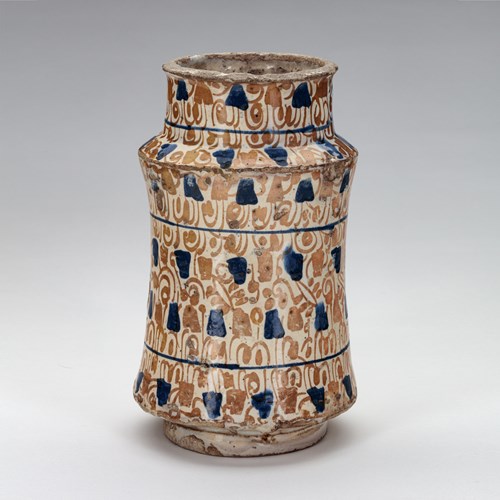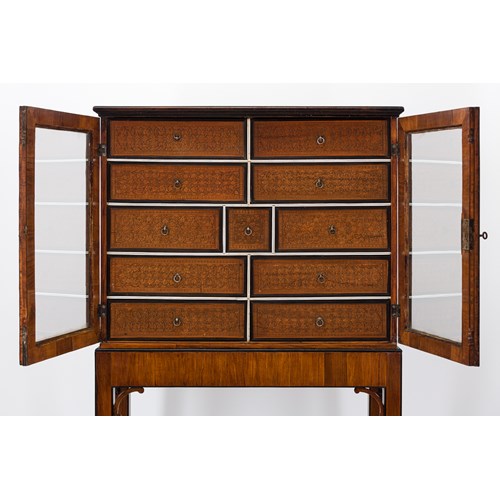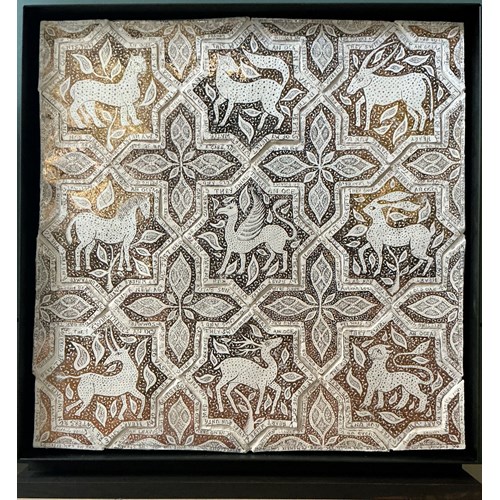Casket
Date Early 18th century
Period 1600-1750, 18th century
Origin Russia, Kholmogory
Medium Walrus Ivory openwork on mica, Brass mounts
Dimension 16 x 20 x 16 cm (6¹/₄ x 7⁷/₈ x 6¹/₄ inches)
The present casket was most likely made in Kholmogory (Холмогоры), which is in northern Russia at the mouth of the Northern Dvina River, and approximately fifty miles up the river from Arkhangelsk (Арха́нгельск, known in English as Archangel). It was the chief seaport of medieval and early modern Russia, established near the exit of the river into the White Sea. Kholmogory had a thriving ivory and bone carving industry, which used the by-products of the hunting and whaling (seal bone and walrus ivory) trade from Archangelsk. A high level of craftsmanship was reached in the late 17th century in the workshops of the Kremlin Armoury, where, under the direct patronage of the Tsar, Yevdokim and Semyon Sheshenin, who had been brought from Kholmogory, produced bone carvings for the court and the Patriarchy. Similarly, the Kholmogory bone carvers Osip Dudin and Nikolai Vereshchagin, who worked for the imperial court in the 18th century, made objects that served as diplomatic gifts. Highly influenced by the designs and decorative repertoire of objects brought by Dutch, English and German merchants, the bone carvings made at Kholmogory, albeit unique, remain poorly known and studied.
[1] Chaiklin; Veenendaal; Crespo, pp. 212-218, cat. 19
[2] Kotilaine, pp. 17-27
Date: Early 18th century
Period: 1600-1750, 18th century
Origin: Russia, Kholmogory
Medium: Walrus Ivory openwork on mica, Brass mounts
Dimension: 16 x 20 x 16 cm (6¹/₄ x 7⁷/₈ x 6¹/₄ inches)
Literature: Bystrova, Ye. ‘Холмогорская резьба по кости [Kholmogorskaya rez'ba po kosti]’, Народное творчество [Narodnoye tvorchestvo], 3, 2007, pp. 60-65 [in Russian].
Chaiklin, M. ‘Ivory in early modern Ceylon: a case study in what documents don’t reveal’, International Journal of Asian Studies, 6.1, 2009, pp. 37-63.
Crespo, H. M. Choices, Lisboa, AR-PAB, 2016.
Kotilaine, J. T. Russia's Foreign Trade and Economic Expansion in the Seventeenth Century, Leiden - Boston, Brill, 2005.
Veenendaal, J. Asian Art and Dutch Taste, Zwolle, The Hague, Gemeentemuseum, 2014.
Ukhanova, I. N. Pезьба по кости в России XVIII-XIX веков [Rez'ba po kosti v Rossii XVIII-XIX vekov], Leningrad, Khudozhnik RSFSR, 1981 [in Russian].
More artworks from the Gallery









